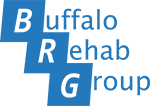There are many terms doctors, therapists, and patients use to describe an injury.
You may have heard of a pulled muscle, a contusion, struggled with a sprained this or strained that. All of these terms can be a bit confusing if not explained properly.
If you’re thinking to yourself, “Aren’t those all the same thing?” keep reading!
Types of Force
Our muscles, bones, ligaments, and other connective tissues are all in place to allow us to move and respond to the forces placed on our body.
Our body counteracts external forces (think gravity, someone hitting you, or a gust of wind) by generating internal forces from our muscles, bones, ligaments, and connective tissues.
Injuries occur when the load placed on the tissue is either too much, applied too quickly, or the structure undergoing the stress is not anatomically ready to endure the amount of stress placed on it (1).
The main forces that act on our tissues are compression, tension, and shear forces (1).

Compression
A compression load injury refers to too much force in the same direction from opposite ends (1). Think of squishing a jelly donut so much that the jelly inside leaks out because the donut became too short and too thick.
Tension
A tension load injury pulls tissue too hard in opposite directions (1). A perfect example of this is pulling apart taffy. The taffy allows a moderate amount of stretch before it eventually breaks because it became too long and too thin.
Shear Force
Shear stress refers to forces acting parallel to each other but in opposite directions (1). Shear forces are applied while using scissors, and the friction created cuts the paper in half.
Applying the Principles of Forces to Injury
Both strains and sprains refer to an injury of overload and overstretch (1). Both are also tension-load injuries but affect different types of tissues.
In short, a sprain refers to a ligament injury. Ligaments connect bones to other bones, providing support and stability to our joints.
A strain refers to an injury to a muscle or tendon. Muscles are connected to bones through a tendon and are able to generate forces to allow us to move.
Contusions are typically caused by a compressive force, essentially the injury occurs by squishing the tissue. Shear forces tend to cause injury to tissues that are designed to be shock absorbers — like our spinal discs or the meniscus of the knees. Shock absorbers are designed to tolerate a lot of compression (like jumping), but do not handle shear forces well (think twisting motions).
The next time you hear about someone straining, spraining, or pulling something, you should have a better understanding of the injury.
You can use your new found knowledge on force to help prevent injuries or even promote tissue healing!
References
- Magee, David J. Orthopedic Physical Assessment. 2008.
- Jones. “Laboratory Manual of Physical Geology.” Laboratory Manual of Physical Geology, 3rd ed., 2001, socratic.org/questions/what-is-tension.
Don’t let pain or injury slow you down.
If you’re struggling with a sprain, strain, or pulled muscle, our Physical and Occupational Therapists can help. Let them customize a plan that gets you back to moving and feeling your best.
Treatment is covered by insurance, no referral is needed to start, and with flexible in-clinic or virtual appointments available, you can find a time that works with your schedule.
Call 716-458-1990 or click here to schedule online:
